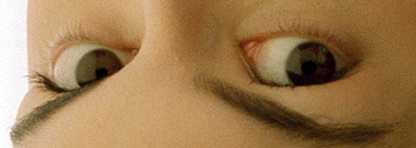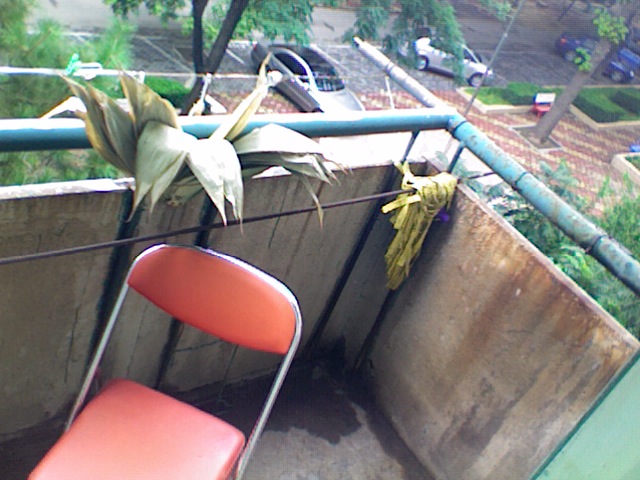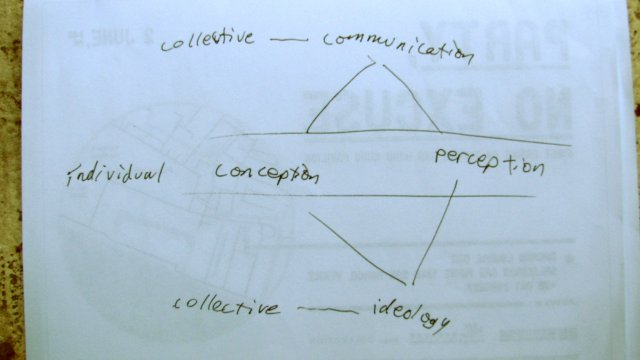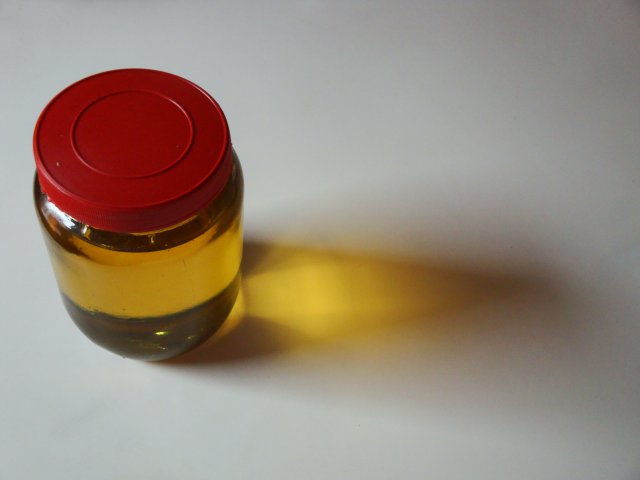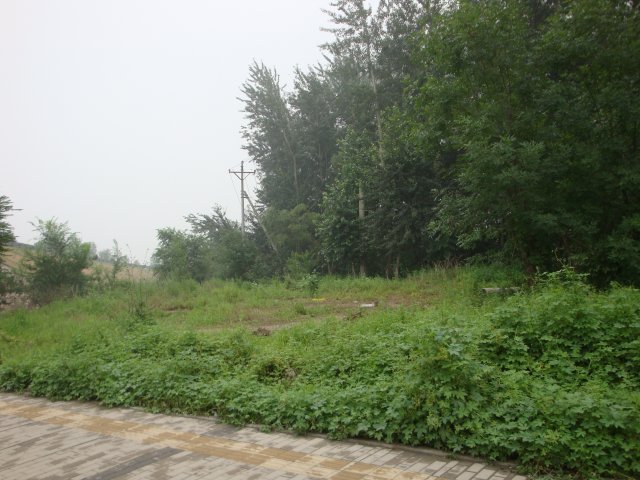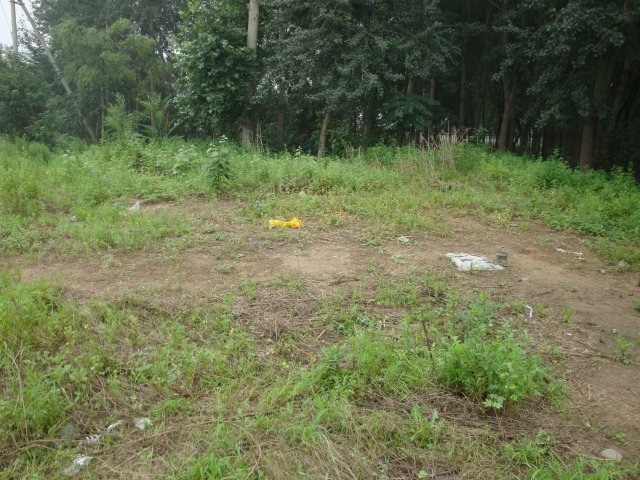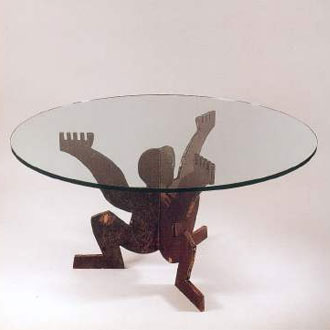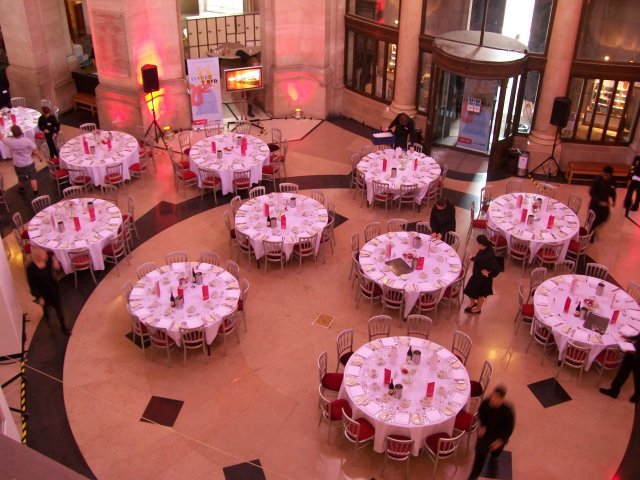
After graduating from NSCAD, I began planning a road trip across the United States to reach the West Coast. I thought that it might be an idea to try and contact artists whose work I thought was interesting, and if nothing more, just visit them. It was a very naïve notion, I confess. When I tried finding their contact information, enquiring through galleries or university faculty lists, I would only receive answers from assistants. At the time, I was surprised; I just had no idea how this thing works. It occurred to me at the time – but I failed to act on it then – that instead I could just meet these assistants.
Only much later did I understand who assistants are, being not only useful individuals to the realization of artworks, but a parallel world that corresponds as well as struggles with the world of the artists (the world that we learned about in school). Having worked for several years in assistant jobs, and alongside other assistants, I am very much interested in how others understand the position. At the Venice Biennale, I again met many interesting young artists working for the installations of other artists, bringing up the idea to ask some friends for accounts of this job. Below are just a few. I hope to continue this discussion, and welcome others to send me their opinions.
**********************
working as an assistant has simply been the search for money. it has never benefited my own work nor have i ever felt it compromised my position by working for others. the benefit of working as an assistant is the lack of conviction usually alloted to the assistant and in my case, a lack of a long term commitment. it helps month to month. it has been a rarity while working for another artist where i identify or even support the work that is being inevitably produced. my hands are offered, not my opinion, and that is all i am really willing to offer. there was a time where i thought that construction from assisting jobs was starting to enter into a direct commentary on my life as on artist and i started to think about christopher de’arcangelo’s practice as an artist and a construction worker…
i recently assisted S___ on a project of his… which involved a trip that i didnt want to be paid for. and in this particular case, i did feel a greater connection to the artwork, and maybe resultantly had no interest in being paid for it. maybe the payment itself creates the disassociation, the wall the assistant hits while the artist keeps on going..
i know these answers aren’t profound, and if you are going to publish it, please don’t use my name!
*********************
Of course I remember our conversations in Yokohama about the ‘Side-Dish’ show, or making an assistants show, I still think it could be funny, although for sure one needs more of an angle than showing the ‘second-class’. Hmmm, about your questions, I guess they have to remain anonymous since people could maybe lose their jobs if they speak their minds.
As for me, well yeah, I don’t do too much assistant work as you mentioned, more making their websites and catalogues and what not, so at least you have the relationship of a kind of ‘expert’ and not like in Yokohama, where there was clearly more hierarchy involved.
My own artwork doesn’t really benefit from my design work (for design I author everything via a studio name to keep my proper name out of it, and also not to confuse Google searches and what not.) For sure you can meet some people, and they find out you also make work, but it’s been my feeling that they prefer you keep it professional and not bring too much your own art stuff into the mix. So basically in order to keep a good client relationship to get money, I generally keep my own things and interests out of the discussion.
It would be interesting to ask people who really do work closely with artists / art institutions these types of things. I think the idea is that you can get some experience and exposure, but often, you become too ‘useful’ for the person or the org. and they end up not being able to perceive your practice in any other light beyond being useful somehow. I’m just in Switzerland now (again design job for a museum project), but one of the technicians here for example makes all of J___A___’s work, I mean since years and years, and he works as this museum technician, so that’s what I mean in terms of getting pigeon-holed into a certain role.
************************
Without a niche (a niche niche)
The broad-daylight operator with many skills and a firm, able grasp of English (and other languages), with people skills and studied gestural appropriateness, wit and levity, an eye for aesthetic forms and a founded and running knowledge of art history, a fair knowledge of political affairs (and some catching up to do in history), a philosophical basis that holds itself upright, acquaintance with cookery, culturally experienced and travelled, sympathetic with the losers, critical at opportune moments, vague at the sensitive ones, rebellious a little too often but a hard worker and team player nonetheless: such a set of attributes will have you arrive at a job in your chosen profession, with an amount of creative flexibility and mobility. The only drawback is that because it is such a general set of characteristics, the person it describes will never be invited to join any exhibitions or panel discussions. Having no particular acumen or idiosyncrasy, no “subject”, this operator can be said to be in a sustainable position because these skills are valuable when transferred to any position or project, and (if truth be told) can lead in a direction of individuation – because of the creative nature of the character, because of its proximity with the author, its potential overtaking of the author – but sustainability can easily be imagined as stasis.
****************************
OK, so my plan to write you last night failed because a friend of mine was in desperate need of comforting and I had to provide food and good words for her inexplicable grief. Good enough excuse? I’m gonna steal time from __ in order to answer your question instead.
I’ll try and order my thoughts about this subject as best I can, as I think that authorship is a great topic to be examining, but I might be more jumbled than is useful to you. Maybe I’ll just try answering your questions directly:
Q: Could you describe an occasion when you have been involved in the manual process of making someone else’s artwork?
A: I’ve worked for a few artists on various pieces, bits and bobs really, but my most prolonged experience was with a stone carver who worked in small town Canada. This type of practice is probably less controversial than, say, a painterly one, because the manual tasks involved to get a stone to the ready are more similar to stretching and priming a canvas as opposed to actually being responsible for the draughtmanship and paint application (and then, as it was in the Renaissance, having the master do the face, hands, and signature at the final stage).
Working directly for an artist, however, is the same as any human relationship – there is a gradual understanding of that person’s interest, ability, and creative personality, which tend to dictate (depending on the interaction of those factors with your own) how much input is sought, proffered, considered and accepted from assistant to artist. In my case, I found the woman I worked for open to my ideas, and as she grew to trust me and my abilities (the latter being one of the critical influences in how much is left to the assistant) I was handed over more responsibilities. What was most important to note from the experience, however, was how, no matter what amount of hours I put into any given piece, and how much I felt some sense of ownership towards it, everything that came out in the end was emphatically not my work. Now, this may be because I trained as an artist as well, and Moore/Noguchi formalism isn’t my thing. The instructions from the artist meant that, whatever my contributions were, the construct linking all the pieces together was bound to be hers, and as such there was nothing but gratefulness on my part for teaching me certain skills and keeping my belly full.
Does this have anything to do with seeing people (assistants? workers? servants?) as instruments? A bulldozer operator working on the Sternenfall exhibition at the Grand Palais was told by Anselm Kiefer, in his imperious yet mischievous style, that “you are my pencil”. And proceeded to direct the destruction of one of his container towers the way a ballet choreographer would direct his corps.
Q: To what extent and in what ways was the artist involved?
A: Since her practice was on the mystical/personal side of formalism, the artist I worked for worked very closely with me on the direction of each piece. This hasn’t always been my experience with other artists, so I would say that to a great extent, this depends on the slant of their practice. It might be considered inauthentic, cheap, cheating or worse by some that contemporary practice involves what is, essentially, signing your shopping, but to some it is these questions of purity (and playing with same) that interest them most. Didn’t Benjamin accurately diagnose the loss of aura by the art object? Now imagine a generation of artists, post-Duchamp, post-Warhol, the majority of them reared in hothouse art school environments saturated with “theory” (the Frankfurters leading the charge), and their practice begins to make a lot more sense in terms of its use of prefabricated or otherwise outsourced production.
Working with artists indirectly, via a gallery, is different than working in their studio, mostly because there are more layers of red tape to wade through, but also because costs need to be approved on either side of the transaction. As a tech, you’re also removed from direct contact with the artist, which can sometimes be useful as insulation against day-to-day aggravation, but is also a hindrance because you don’t have the luxury time in which to plumb the depths of the artist’s head, therefore having to either guess or stall when the decision making is left to you. It’s a halfway house that can be very frustrating, especially when you’re working with somebody who is on a different continent.
I was charged with organizing the assembly of the concrete half of a piece by D__S____, and trying to create a relationship with him while at the same time managing to manoeuvre around the exhibition budget constraints was quite tricky, and I ascribe most of the difficulty to there being a five hour time difference between us. Clear communication becomes essential, and slow email responses, unclear directions or instructions, and lack of prep time all contribute to problems and delay. In the end we reached a concord, but the process was pretty gruelling.
Q: Any thoughts on the finished work? A sense of achievement or was this just a product of your day-job? Was your contribution acknowledged? Do you think it should have been? Do you think your involvement had any bearing on the authorship (or ownership) of the work?
A: I spoke about it in the answer to the first question: when the artist was directly involved, I felt pride in completing a task to the best of my ability, but no real sense of ownership or entitlement. You’re really just earning your place on the acknowledgement list in the catalogue. Is this true of artists who let you/get you to do most of the work on your own? For the most part I would say yes, because again, even if you’re entrusted to make aesthetic decisions normally associated with the ideal of the Artist As Romantic Genius, it’s not being presented as your own work, and the starting points in the development of the piece can be rather distant from where you yourself would begin.
Take, for instance, ____’s “Firmament”. I know the people who helped design it, test it, prototype it, and I helped assemble the final object (twice). Now, because I don’t work for his studio, my feeling when it was done, both times, was more of a “good job” feeling rather than a “look what I did” feeling – but I think that my studio friends tended towards the latter. After the first install we were all taken to a dinner by AG, which was appreciated, and certainly not the norm. I certainly feel that assistants should be acknowledged for their contributions, but they don’t really need to have their names on the museum information plaque. Apparently some would-be buyers of Hirst at his Sotheby’s auction were demanding to know the identity of painting assistants that worked on his FACT paintings, justifying their requests with “well, what if they become famous someday?”. That becomes interesting trivia perhaps, and maybe biographical fodder 50 years down the line, but I can’t see any tech or assistant I’ve ever known to insist on outward credit like that, no matter how responsible they might be for the final output. It’s like when you repaint a white wall white: the worst thing that can happen is that somebody notices that you’ve done it.
This is perhaps the symbiotic nature of artist/assistant: the artist needs the assistant to create the work, but the assistant needs the shield, the contacts, and the prestige provided by their association with a more established creative agent. This also brings to mind the idea of the artist as thief, and the most successful artists being the ones that can cover up their thefts the best. Artists constantly nick their ideas from history, both the capital-H kind and their own personal version, and it would be absurd to think that their assistants, especially the ones that they have long relationships with, don’t contribute to that latter history.
I can see I’m starting to ramble, so I’ll leave off with two art historical examples that come to mind, and that I’ve never really seen examined in depth and could be relevant (?):
– Jack Goldstein used a cadre of assistants to make painting in the 80s, and was viciously attacked for it, namely because it was unfashionable at the time. Was Hirst the first to make it cool again?
– Moholy-Nagy talked with a paint factory foreman to make his “telephone pictures” in the 20s.
So, I don’t totally feel satisfied with my loquacious answers, but it’s something, no? Please let me know if you want me to clarify any points, and the only acknowledgement I demand is a copy of the final dissertation.
That and you owe me, ahem, nine pints…
All the best,
N__
[written in response to a questionnaire by K___]
****************************
I can try to answer your questions, but I’m not sure I’m the best person for it. I’ll give it a try anyway. I think I’ll just give you one answer and it will touch upon every question one way or another.I have to say that my experience in assistant jobs are very very limited. I’ve worked only twice, and both for very short time. In both instances, I was working for one show of each artist, and with both of them, I had teacher/student relationship, which I believe created rather different dynamics compare to usual assistant experience.
For one of them, I was almost a co-author as I was editing the artist’s video, and I also compiled soundtrack for it. The research for the soundtrack being the integral part of the piece, and the fact that the direction of this research was pretty much up to me somewhat made me feel closer to the authorship of the piece. However, I am inclined to think that that is an illusion. I wouldn’t have done anything like it if I wasn’t getting paid to do it.
For the other job, I was helping the artist’s performance, looking after live video mix. That was very straight forward, I did what I was told to do.
As I said, being a student of both artist before working for them made my relationship to their works less complicated in terms of possible influence I was getting or feeling of being less successful as an artist compare to them etc. As a student of those artists, those questions became somewhat irrelevant. For instance, it’s natural to be influenced by your teachers.
I think it’s pointless and misleading to have a sense of authorship to the works you assisted. The economic relationship you have to your boss, and the manager/director position he/she takes is enough to make this point unambiguous. Otherwise, an art work turns into a dubious utopian project, e.g. Yona Freedman.
In terms of exposure/contact, hell yeah, being an assistant of successful artist helps big time. I can think of one or two examples around me, though I am not going to name names. Since I never had an assistant work as a regular job, I can’t really say how long I want to continue, but I can imagine myself doing that for a couple of years. I don’t mind having art related work as a money job. My own practice is also directed toward commerce, so no contradiction there.
I think one important aspect of assistant job, at least for me, is the fact that it is often the only available employment for young artists living in foreign cities where they don’t speak the local languages. I think this trend will continue as artists become more and more flexible and uprooted in their career management. You are an extreme example of that, I think.
I can’t really think of assistance in terms of its interest. It’s a structural necessity in keeping the art trade going the way it is at the moment. In that sense, it’s an interesting subject to think about in order to understand the structure of art making.
****************************
as for the questions about being an artist’s assistant, i should mention that I have only done it on a few occasions and never as a full time job. Also, it’s not a position that i’ve ever sought out. the few times i’ve assisted artists i’ve been asked to do so because of certain technical skills that i possess. so, i’ve never found it necessary to consider the proximity between my art work and my livelihood because it’s always only been temporary. With that said, I might consider trying to find a job as an assistant once i’ve finished school, but i don’t know for sure how long i’d be interested in holding such a position. i’ve always considered working for professors under whom one currently studies to be problematic, especially when the job begins to take priority over one’s studies. nevertheless, professors continue to exploit their students for their labor. to answer a few of your other questions, i don’t believe that my work would benefit from having an assistant. In my program, graduate students can have undergraduate “interns” for a semester at a time. This exchange is seemingly mutually beneficial as the undergraduate students get credit for their contribution and the graduate students get assistance on their projects. as far as i have observed, the graduate students who take advantage of this opportunity are not necessarily the ones who have so much work that they can’t do it alone, but they are the ones who wish to exercise their ability to manage someone else. aside from not wanting to decide how to delegate responsibilities to someone subordinate to myself, i wouldn’t want a full-time assistant because of the anxiety that i might experience over not having control of something that is within my capabilities. So, perhaps i will continue to make work in a way that does not require me to seek technical assistance.
historically, a lot of well known artists owe at least a part of their success to older artists who they worked for as assistants. Think of isamu noguchi (who worked for brancusi) or michael krebber (kippenberger), for example. whether this is to be expected or not, i don’t know because i’ve yet to see it happen.
assistance in art is both interesting and relevant, michael, and i’d be happy to elaborate on some of what i’ve written and answer some of the questions that i ignored if you want me to. let me know, though, if this is what you are looking for.
by the way, how was venice?
(originally posted on the Vitamin Creative Space
blog, 14/06/2009)
